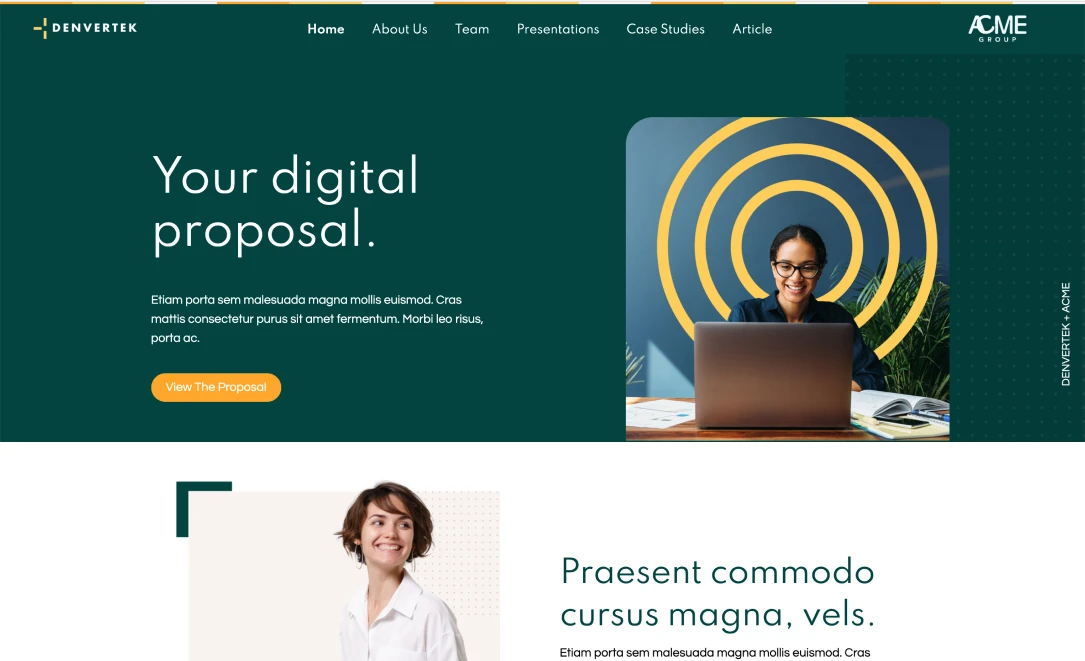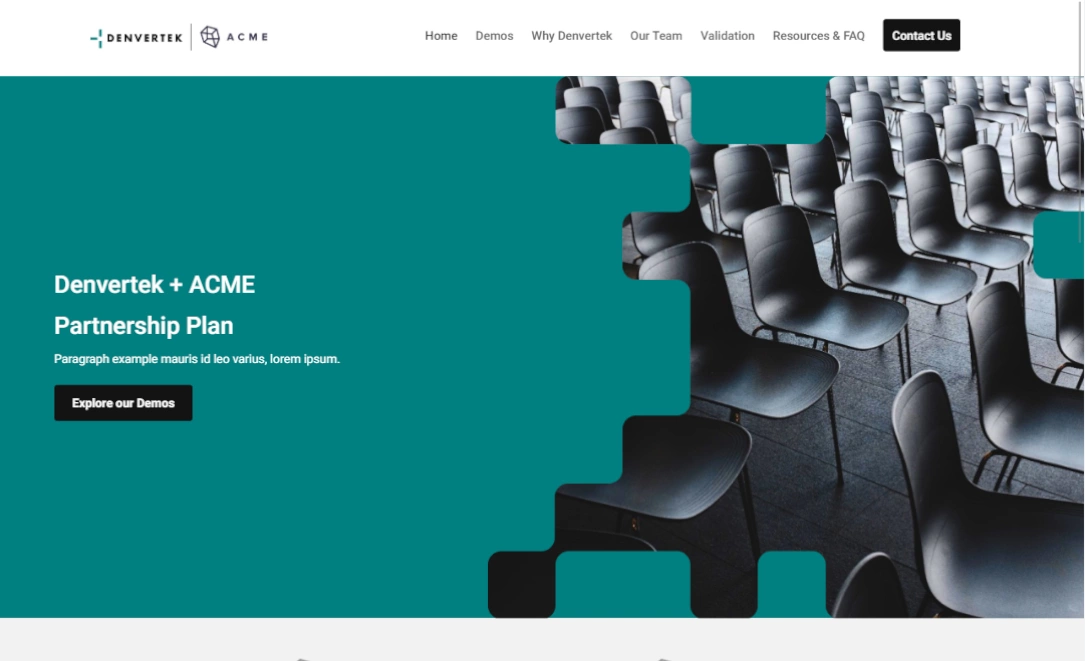If you’re looking to bid on your business’s next big project, you’re probably wondering how to nail the perfect pricing proposal. It’s an information-rich document that sets the tone for your relationship with your client, especially on a contractual basis.
Here’s how to create a pricing proposal that will make your client excited about working with your business.
Everything you need to know about pricing proposals
What is a pricing proposal?
You will likely be asked to offer an estimate for the cost of services early in the process of beginning work with a new client, this is where a pricing proposal comes into play.
A pricing proposal is similar to a quote, but it’s oriented toward projects rather than products. Unlike a one-off quote, your proposal will include details related to your project’s timelines, personnel involved, and resources that you anticipate using. It’ll break down the total cost based on each element that will play a role in your completion of the project.
The more detailed your pricing proposal is, the better, because it can help you easily navigate through discussions about negotiations or changes your client may respond with. Not only this, it demonstrates a dedication to transparency, an important quality that will set you apart from your competing bidders.
Different types of pricing proposals
Not all projects are billed or estimated in the same way. Your pricing proposal will reflect how time and resources are being allocated, and the formatting you use should properly reflect this. In general, pricing proposals are formatted in three ways:
Hourly or daily pricing
If the project you are bidding on requires some flexibility regarding timelines and needs, hourly or daily pricing may be a practical way to offer your clients an estimate that is still informative but has wiggle room. When you bid using this pricing format, you will charge your client for the time and manpower necessary to work on their project. You’ll need to figure out how many days are needed to complete the project and multiply it by the number of staff needed.
Monthly retainers
A retainer offers consistent pay for ongoing work and can help avoid nightmare situations related to not receiving payment for completed projects. It’s also an excellent opportunity to establish a long-term relationship with your client for future work.
Retainers make sense for projects that require ongoing work or maintenance. This will likely be the case for digital marketing agencies, of which more than a third report using a retainer model for their pricing strategy. If you are managing ongoing projects, keeping content up to date, or working on a long-term strategy with your clients, you will likely use this pricing model, too.
The agile method
If there are several layers or phases to completing the project you are bidding on, it may be worthwhile to consider using an agile pricing plan. This approach involves benchmarking across your project timeline and billing for each completed segment before continuing. It offers flexibility for adjusting your billable expenses if the cost of resources increases, or if you find that you’ll need more personnel to complete the necessary work.
This also offers clients a sort of “trial”, as they can determine their satisfaction throughout the completion of the project and provide feedback as they go. Likewise, this offers your company the opportunity to adjust terms based on experiences with your partnership.
Tips when writing your pricing proposal
Creating a pricing proposal can be challenging, as it often seems like a tricky game of finding the right balance between several different factors. Here are a few tips to help you with the process.
First and foremost comes the question of determining the value you offer. When you are creating a pricing plan for your clients, this should be your primary focus. While it may seem intuitive and simple to charge clients based on estimated cost, you will likely end up not seeing a profit margin. Ultimately, your clients are paying for the niche, specialized services you offer that competing bidders do not. Determining what sets you apart from your competition and how important that quality is to your client will help you determine your price point.
In the same vein, remember that you get what you pay for, but so does your client. While it may be tempting to lower prices in the interest of a competitive edge, likely, your client is just as interested in quality as they are in expenses. Low-balling your offer can communicate what you perceive your value to be. It may lead your client to believe that you don’t foresee yourself committing adequate time or resources to their project. The goal is to be the right person for the job that offers quality service at a fair price, not just to be the lowest bidder on a project.
Finally, offering your client options to choose from in your proposal can help move you just one step closer to closing faster. It skips the back and forth of all-or-nothing negotiations and can demonstrate your commitment to flexibility early in your relationship with your client. You can do this through a tiered pricing structure that increases with the sophistication of services received or bundles that package sets of services.
How Zoomforth can help you build better pricing proposals
Finding the right delivery method for your digital sales proposal is the first step in getting your clients the information they need to know. While email attachments and long chains of communication may have cut it in the past, using a more streamlined deliverable will help your client cut back on the time they spend sorting through options so they can spend more time talking about the next steps with you.
Digital proposals are accessible and impressive to clients
Your digital sales proposal should be easy to find, sort through, and share. A shared pdf is great when it’s first received and opened, but when it comes time to find it again, it can be a headache. Elevating your digital pricing proposal isn’t as challenging as it may seem with a microsite.
Finding an easy-to-use microsite service is the first step you can take to getting your pricing proposals to your clients. A microsite puts all of the information from your pricing proposal in one easy-to-access link. It makes it easy to share the information with your team so that everyone has access to the information you are sharing.
Plus, taking the time to create a microsite for your clients is likely more impressive than your competitors. It shows that you are looking to provide them with all the information they need most efficiently.
Use microsite design to highlight your value
The best part of using a microsite to create your pricing proposal is that you have an added opportunity to emphasize value to your clients through design.
Now that you are not limited to what can be sent in an email attachment, you can design a microsite that includes tabs for testimonials, case studies, or portfolios so you can showcase samples of your work alongside the pricing models you are offering your clients. It’s a great way to remind your clients what your niche is and to demonstrate the value you bring to their projects.
Also, with a drag-and-drop microsite builder, it’s easy to create elements on your microsite that draw the attention of clients toward certain statements or pricing points.
Use interactive elements to control pricing options
If you’re looking to add flexibility to your pricing model without adding length to your pricing proposal, your microsite can easily incorporate interactive elements that make extra information look clean.
Whether you want to incorporate a more visual approach with tables and charts or create a gallery with navigable examples of your pricing models, your clients will appreciate the interactive nature of your proposal.
For example, if you’d like the client to be able to adjust the pricing model depending on their needs, you can have a slider that shows them different options.
Devote a subpage to your project timeline
Let’s face it, incorporating a timeline in a PDF is a pain to format and makes writing clunky. It’s another graphic that gets lost in text and becomes useless or hard to read.
Luckily, your microsite can have its very own subpage dedicated to your proposed project timeline. It can look however you prefer, a literal timeline if you are proposing hourly/daily rates, a table for proposals that are using the agile approach for pricing, or a calendar for your clients that are on a monthly retainer.
It showcases progress that you are anticipating and keeps your clients in the loop as you work.
Reduce actual risk—that is, security risk
Your pricing proposals will likely contain more than just your quotes. If the documents you are sharing with and between your clients contain sensitive information, you must ensure that information is shared securely.
Where traditional delivery methods are lacking, Zoomforth goes the extra mile. You can control who accesses your pricing proposal in several ways:
- Link security- determine who has access to your links when they are shared
- Password protection- create and set a password for document access
- Email approval- determine organization-wide access with approved emails
- Multi-factor authentication- email logins are verified with a single-use code
- SAML- microsite visitors are required to use a Single Sign-On Portal
Try out Zoomforth to build pricing proposal microsites
Start your client-facing relationship off on the right foot for deliverables that are professional, secure, and engaging. Zoomforth makes taking your existing communication strategies to the next level easy. Sign up for a risk-free demo today to find out how.
Photo by LinkedIn Sales Solutions on Unsplash



